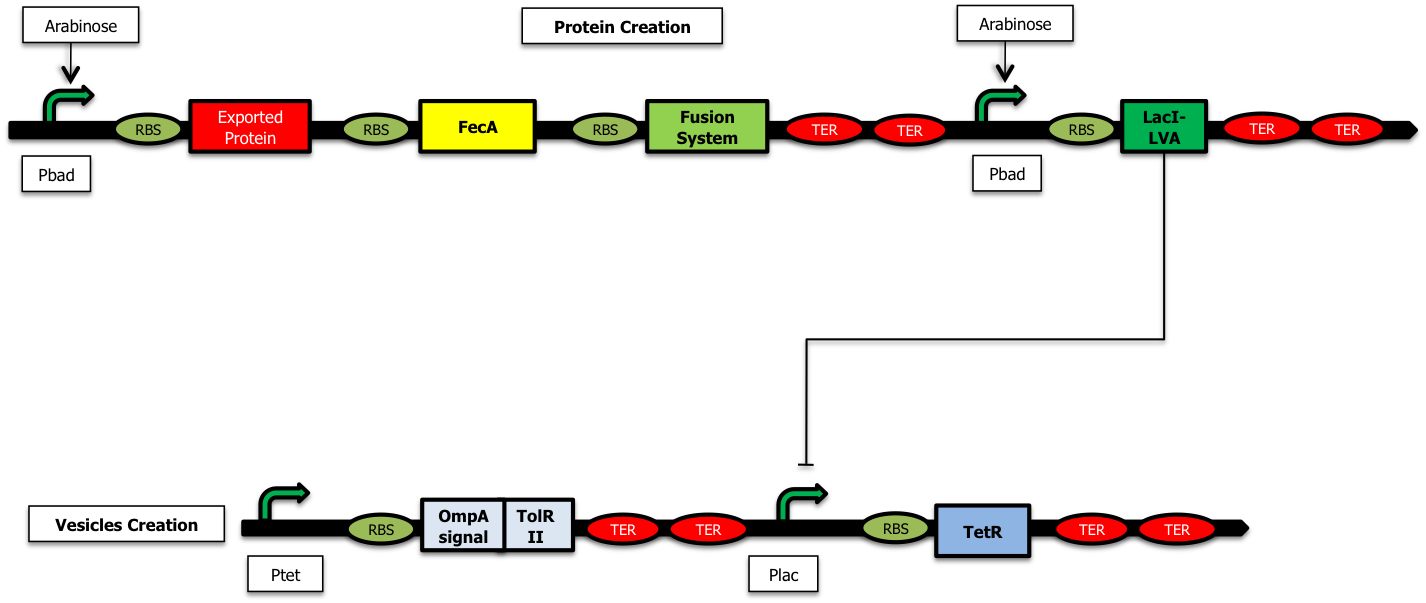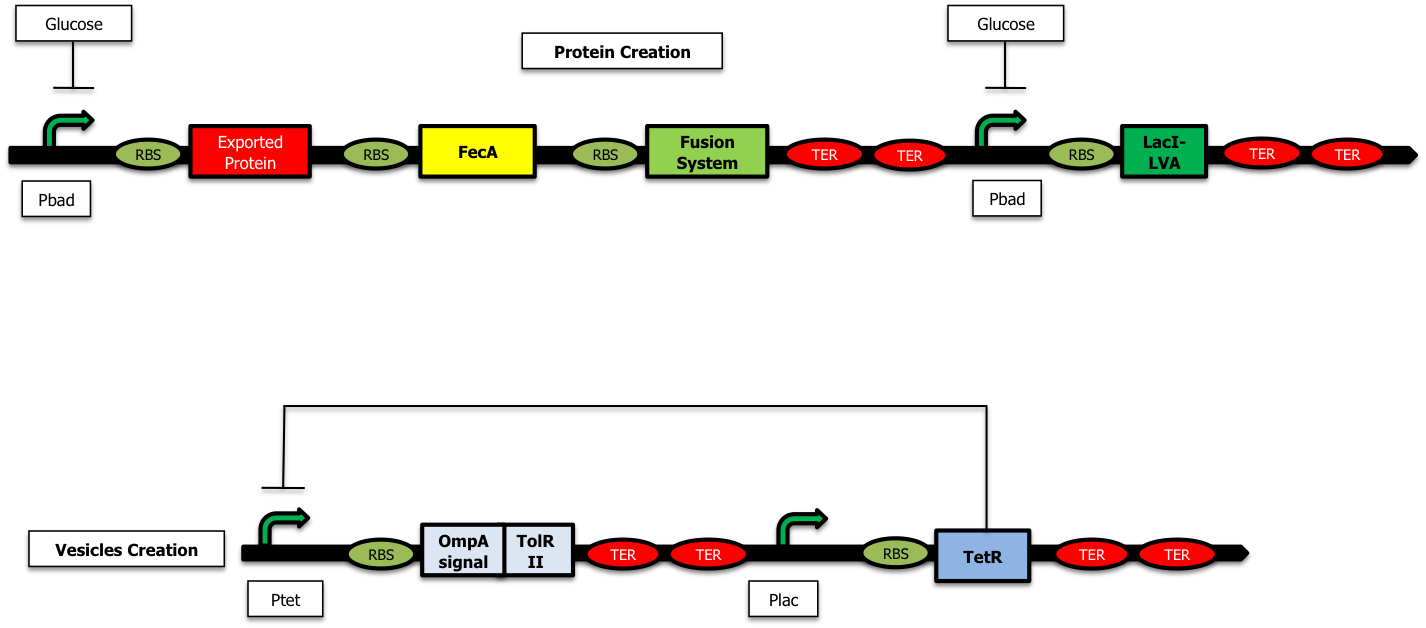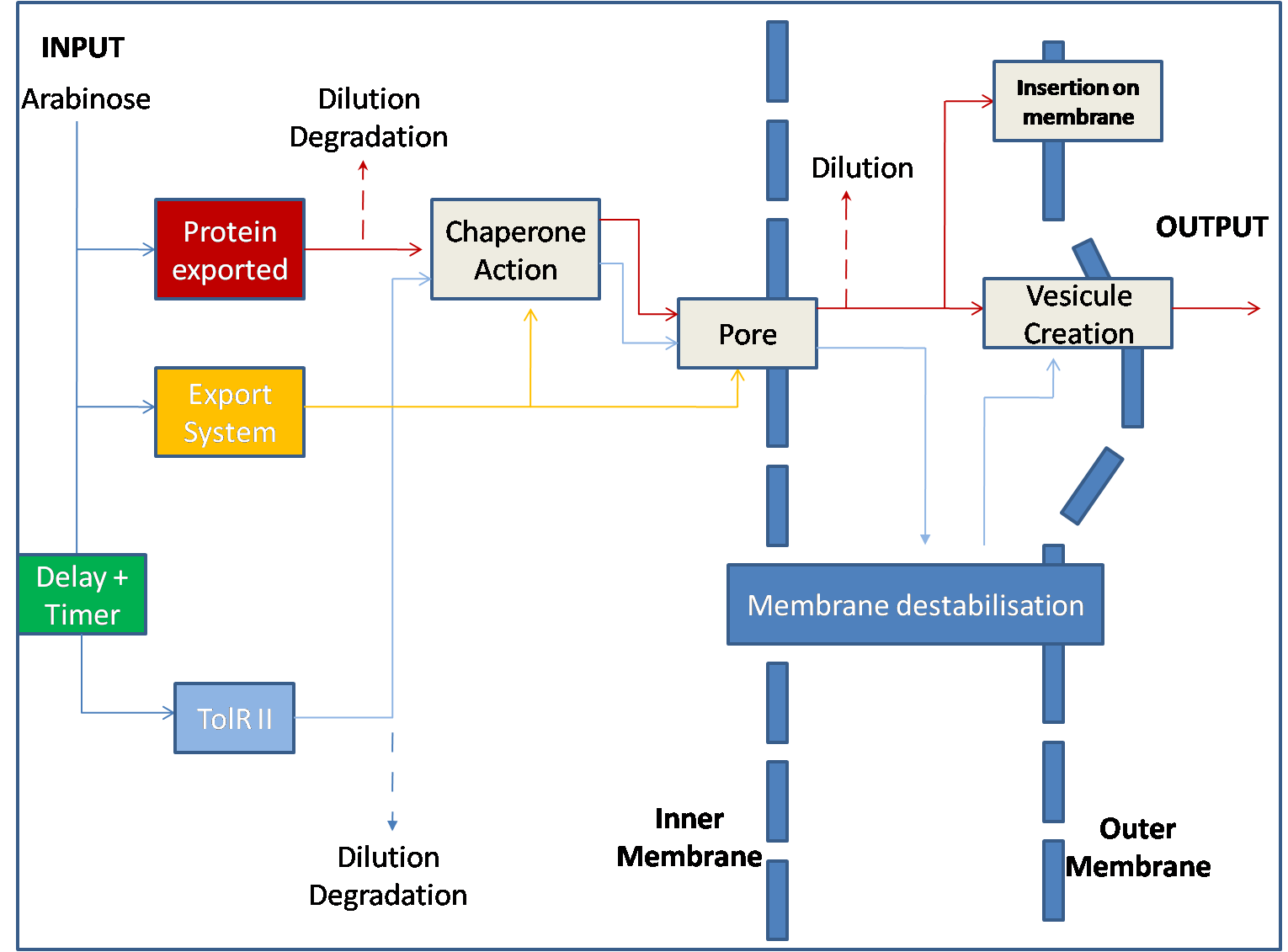Team:Paris/Project
From 2009.igem.org
iGEM > Paris > Home > OMV Project
Contents |
Overall project: Message in a bubble
blabla
Il faudra faire appaître bien en évidence dans le wiki, au niveau des menus principaux, un lien vers une page qui présente toutes les constructions biuobricks réalisées et envoyées au régistry. Important pour les juges qui vont chercher les réalisations.
A. Plasmid construction
Avant de parler des plasmides que vous avez voulu construire, il faut parler du système entier lui même. Et c'est bien ce que vous faites dans la suite en partie. L'implémentation sur des plasmides particuliers est un point technique qui vient après.
En premier lieu faites un schéma, un diagramme du projet complet: production des proteines signal, système d'adressage de ces protéines vers la membraexterne, production des proteins pour l'émission de vésicules,production des vésicules, réception des vésicules, déclenchement d'un accusé de réception etc...
Un tel schéma peut être dynamique hyperliens vers les parties correspondantes. Ayez en vue le discours modulaire à différentes échelles des biobricks: niveau système, niveau device, niveau ADN... on ne parle des plasmides qu'au niveau inférieur.
The plasmid construction is divided into 2 functional modules :
- The emission system, which aims at producing vesicules.
- The reception system of the signal sent via the vesicules.
A.1. The emission system
To implement our vesicles emission project, we had to think about a few constraint in order to make our system efficient. To put into place all the functionalities we needed, we decided to use 2 different plasmids as shown on the image below.
Writing the message: production of signaling proteins First of all, before sending vesicules into the surrounding medium, we have to make sure that every molecule and protein that has to be inside the vesicules is already into place before the bacteria starts the creation of vesicules. In other words, the "emitting" bacteria must produce the protein of interest, the export systems, the FecA proteins as well as the fusion mechanism before creating vesicules.
To create this delay between the creation of proteins and the production of vesicules, we used a double repressor made of LacI and TetR. The LacI biobrick in placed in the first plasmid, downstream the pBad promoter and once it is synthetised, it acts as a repressor on the pLac promoter in the second plasmid thus inhibiting the production of TetR. The pTetR promoter is no longer repressed by TetR and the creation of non functional TolR can start as well as the emission of vesicules.
Preparing the messenger: creation of the vesicles Message in a bottle... pour exploiter l'analogie et être très cvlairs on peut continuer tout au long du wiki à parles de proteines message pour les proteines exportes, de bootle (ou bien de enveloppe ou bien de messager) pour les vésicules, etc... As the creation of vesicules via the over-expression of TolR disturbs the membrane integrity and can creta a important cell lysis, it appeared very important to find a way to avoid a long lasting expression of our TolR biobrick once the input signal is on (presence of arabinose in the medium).
To solve this problem, we decided to place a tag on the LacI protein to speed up its degradation ; as a consequence, once the arabinose in the medium is not important enough to ensure an important expression of the genes downstream the pBad promoter, a litle LacI is created and is rapidly degraded by the proteases. It should be unable to repress the pLac promoter and to activate the production of TetR.
- This is the complete construction when the input signal, the presence of Arabinose, in ON. In this configuration, proteins are created as well as vesicules :
- In the absence of arabinose in the medium, the Pbad promoter is repressed and there is no production of proteins nor vesicules :
A more accurate description of the parts used at each step of the creation process (including links to the parts registry and references) can be found in the different subdivision of the project.
A.2. The reception system
B. Modeling overview
Cette image est pas mal. Et c'est quelque chose dans cet esprit qui devrait être tout au début pour présenter le système global de votre projet. Ce n'est pas seulement une image de modélisation.
Mais ce diagramme est à clarifier. Protein exported -> Exported "message" protein production Export system -> (il s'agit bien de l'addessage des protéines ci-dessus vers la membrane externe?) Addressing system of the message protein to the "bottle", sending the message to the bottle TolRIII -> Production of the message bootle (or of the envelope)
On ne comprend pas Chaperone Action. Ce diagramme doit être lisible pour comprendre les mécanismes, sans détails des molécules sous-jacentes. Il peut-être complété par un niveau plus détaillé, faisant apparaître la couche sous-jacente (les protéines particulières impliquées, les construction de plasmides, etc...)
Le même diagramme aussi pour la réception des signaux.
 "
"


